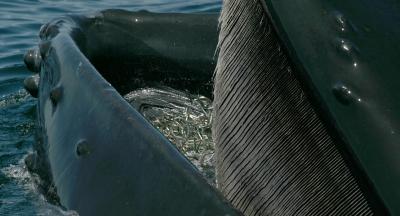The Bureau of Ocean Energy Management (BOEM) provides sand to coastal communities to restore and protect coastal areas affected by storms of increasing frequency and power. Making sand from the Outer Continental Shelf (OCS) available to coastal communities helps them improve their resiliency in the face of climate change. The sand that BOEM provides communities comes from the seafloor on the OCS. It is often the same sand preferred by a tiny fish that humans and animals greatly depend on – the slender, silvery sand lance.
Sand lance are a small fish that serve as a crucial link in the ocean food web, burrowing into the sandy bottom of the seafloor. To better understand the potential impacts sand harvesting could have on the sand lance – and the fish, birds, whales and seals that depend on them – BOEM partnered with the Stellwagen Bank National Marine Sanctuary located offshore of Massachusetts. No mining or leasing activities are permitted in the Sanctuary, making it an ideal living laboratory to better understand sand lance populations and seafloor ecology. BOEM’s investment in scientific research helps our partners and programs work more efficiently together.
This video illustrates how learning more about the sand lance can help BOEM make informed, science-based decisions that balance ocean uses with the protection of coastal communities and the environment.
For more information on BOEM’s environmental and marine mineral studies, visit: https://www.boem.gov/environmental-studies and https://www.boem.gov/marine-mineral-studies.
BOEM's study profile: https://opendata.boem.gov/BOEM-ESP-Ongoing-Study-Profiles-2021-FYQ3/BOEM-ESP-MM-17-05.pdf
-- BOEM --
The Department of the Interior’s Bureau of Ocean Energy Management (BOEM) is responsible for America’s offshore energy and mineral resources. The bureau promotes energy independence, environmental protection and economic development through responsible, science-based management of energy and mineral resources on the U.S. Outer Continental Shelf.


